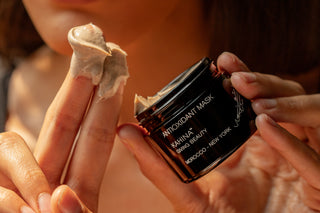Stacks of bread are sold in Moroccan "hanuts" or small convenience shops. Bread is often used in lieu of utensils for eating Moroccan tagines.
Less than a year old, Slow Food Bouregreg, a branch of Slow Food International, is mobilizing civil society in Morocco by warning of the harmful effects that a poor diet can have on the health of the community. Piero Sardo, president of the Slow Foods Foundation for Biodiversity, explained at a meeting last week that Morocco has local products of high quality and of unique national heritage and he stated that the country can play a leading role in protecting culinary traditions and preserving this art in local collective memory.
Vice president of Slow Food Bouregreg is none other than Zoubida Charrouf, the pioneering researcher who established the first argan oil processing cooperatives in the nation. She announced that argan oil and saffron from Taliouine received protected status from Slow Food International, and they have also been included as part of the “Ark of Taste,” a catalogue dedicated to rediscovering forgotten flavors which are also endangered products.
See below for a traditional tagine recipe using both saffron and argan oil adapted from Christine Benlafquih’s blog on About.com (click here to go to the original recipe).
Tagine of Lamb and Olives
Serves four. Prep Time: 10 minutes. Cook Time: 3 hours, 30 minutes
Ingredients:
- 2 lbs. lamb, cut into 2" to 3" pieces
- 1 medium onion, thinly sliced
- 1 medium onion, chopped medium
- 1 tablespoon ginger
- 3/4 teaspoon salt
- 1/2 teaspoon pepper
- 1/2 teaspoon turmeric
- 1/2 teaspoon saffron threads, crumbled
- 1/3 cup argan oil
- small bundle of cilantro, tied together
- 1/2 cup green olives with pits
- 1 cup water
Preparation:
Layer the sliced onions on the bottom of a tagine. In a bowl, mix the meat with the chopped onion and spices, and add the mixture to the tagine along with the water, argan oil and olives. Place the cilantro bundle on top of the meat.
Cover the tagine, and place it on a diffuser over medium-low heat. It will take some time for the tagine to reach a simmer, but once it does, leave the tagine undisturbed for about three hours, using the lowest heat necessary to maintain the simmer.
There's no need to open the tagine unless you smell something burning. In that case, the heat was likely too high and a little water will need to be added to prevent scorching.
After the tagine has cooked for three hours, check on the meat. It should be very tender and easy to break apart with your fingers. If necessary, cook longer. When the meat is tender, reduce any excess liquid, and serve.
It's Moroccan tradition to serve the dish directly from the tagine in which it was cooked. It's best scooped up with crusty bread, with each person eating from his own side of the dish.





